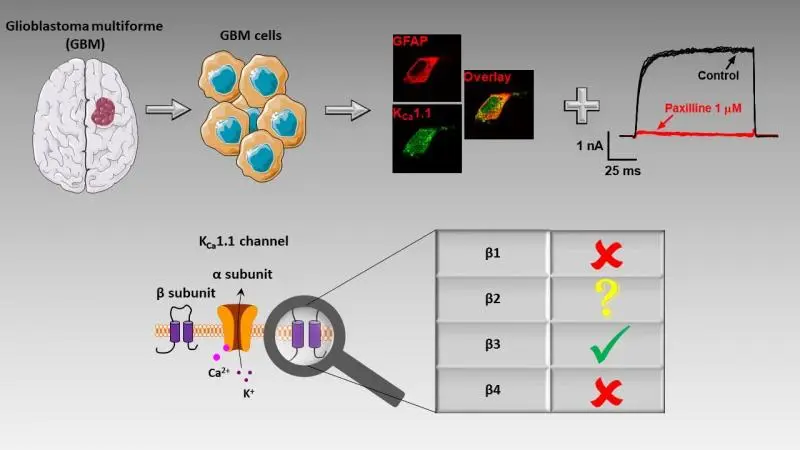
Mapping the functional expression of auxiliary subunits of KCa1.1 in glioblastoma:
Glioblastoma (GBM) is the most aggressive glial tumor, where ion channels, including KCa1.1 K+ channels, are candidates for new therapeutic options. Since the auxiliary subunits linked to KCa1.1 in GBM are largely unknown Feher, Petho and co-workers in Dr. Panyi’s lab used electrophysiology combined with pharmacology and gene silencing to address the functional expression of KCa1.1/β subunits complexes in both primary tumor cells and in the glioblastoma cell line U-87 MG. The pattern of the sensitivity (activation/inhibition) of the whole-cell currents to paxilline, lithocholic acid, arachidonic acid, and iberiotoxin; the presence of inactivation of the whole-cell current along with the loss of the outward rectification upon exposure to the reducing agent DTT collectively argue that KCa1.1/β3 complex is expressed in U-87 MG. Similar results were found using human primary glioblastoma cells isolated from patient samples. Silencing the β3 subunit expression inhibited carbachol-induced Ca2+ transients in U-87 MG thereby indicating the role of the KCa1.1/β3 in the Ca2+ signaling of glioblastoma cells. Functional expression of the KCa1.1/β3 complex, on the other hand, lacks cell cycle dependence. We suggest that the KCa1.1/β3 complex may have diagnostic and therapeutic potential in glioblastoma in the future. The paper was published in Scientific Reports 12:22023 (2022) (DOI:https://doi.org/10.1038/s41598-022-26196-w).